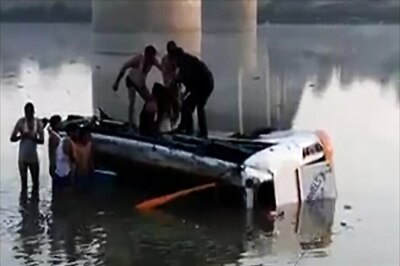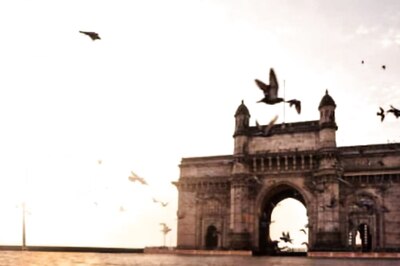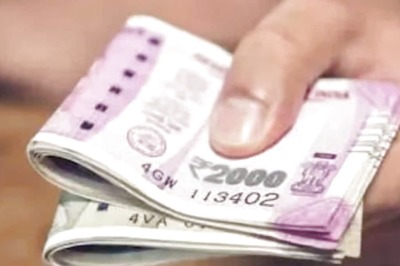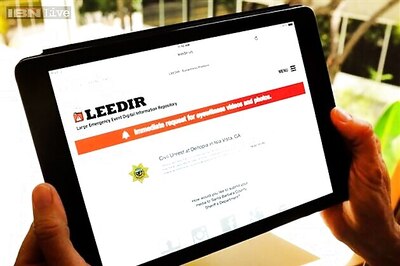
views
Kolkata: When the renowned flautist Sudip Chattopadhyay, landed at the Kolkata airport on Thursday morning, he was shocked to see the thick layers of smog that shrouded the ‘City of Joy’.
Speaking to News18, Sudip said, “The city resembles a gas chamber. As soon as I stepped out of the airport, it felt as though I am a passive smoker because of the high pollution level in the air.”
He added that the feeling was all the more frightening for him since the lungs are the most important body part for someone who plays the flute.
Just like Chattopadhyay, several other musicians too have raised concerns regarding the alarming pollution levels in Kolkata. Many of them have urged policy makers to take stringent measures to save the citizens from gasping for breath, especially in the winters.
Indian classical music stalwart Rashid Khan said the situation here is deteriorating faster than in Delhi. “For classical singers like me, this is a major problem as it affects our health and our singing. After all, singing is all about practice, power of lungs and holding our breath," he said.
Talking about the impressive levels of cleanliness in foreign countries, Ustad Rashid added, “Why are such levels of cleanliness not possible in India? The air here is full of poison. We should all join hands to make our cities cleaner and greener.”
Well-known singer Raghab Chatterjee who has sung for famous film directors like Rituporno Ghosh, Sanjay Leela Bhansali, Rajkumar Heerani and Shoojit Sarkar, said, “Kolkata pollution is one of the reasons I stay away."
Chatterjee chooses to live in Naihati, which is located in the North 24-Parganas district. “My house is closer to the River Ganga and I enjoy living my health life,” he said.
“During music concerts in cities, sometimes the venue is close to busy roads. I personally face problems in performing in such situations because of the pollution. There have been times when I sneezed or coughed during the show,” he said.
Many other notable Bengali singers like Rupankar Bagchi have expressed similar experiences of facing nose blocks and related problems during performances. “Kolkata pollution really became a concern and we collectively need to come forward to make our city clean,” he said.
When asked about some of the precautionary measures the singer takes, he said that he prefers to cover his nose with a wet handkerchief in order to protect himself from pollution. “I clean my nasal passage with saline water, because for a singer, taking care of the nasal passage is extremely important,” he added.
City-based environmentalist Pradeep Kumar Chopra, who is planning to launch ‘Right to Breath Clean Air’ campaign in Kolkata, said, “The situation is alarming in Kolkata. The air quality crossed the dangerous mark and urgent attention is required in this area. It has gone beyond permissible limits particularly for suspended matter that is 2.5 in size, for which the limit is 60 mcg. However, in Kolkata the average is roughly around 150-200 mcg – depending on the areas.”
Despite the lower number of vehicles and industries, Kolkata shuffles between the top five most polluted cities in India, throughout the year.
Green crusader Naba Dutta explained the rampant use of kerosene mixed fuel by auto and rickshaw drivers as one of the reasons for this. Moreover, the share of open spaces in the city, he said, has shrunk to an alarming 7%, which is the lowest as compared to other metropolitan cities. “Ideally, open space as per population density should be between 25-30 per cent,” he added.
“The ratio of the number of vehicles to the road space here is even lesser than Delhi or Chennai. According to Alipore and Beltala Public Vehicle Departments (PVD) number of registered auto-rickshaw is around 20,000 which are supposed to ply on 123 routes across 144 wards in Kolkata. But the ground realty is that there are large number of unregistered auto-rickshaws plying on city roads, and most of them use poor quality of fuel which emits hazardous smoke,” he said.
According to a WHO report in 2016 (based on data collected across 4,000 cities across 100 countries), the annual mean of PM 2.5 (fine particulate matter) of Kolkata in 2015 was 52 microgram per cubic metre. In 2016 it increased to 74 microgram per cubic metre.
According to WHO, the safe limit of annual mean PM2.5 is 10 microgram per cubic metre. However, the India standard is 40 microgram per cubic metre. the annual mean of PM2.5 in Kolkata is 7 times higher than the global safe limit.
As per Centre for Science and Environment (CSE), official ambient air quality monitoring has shown 61 per cent increase in particulate matter from 2010 to 2013.



















Comments
0 comment